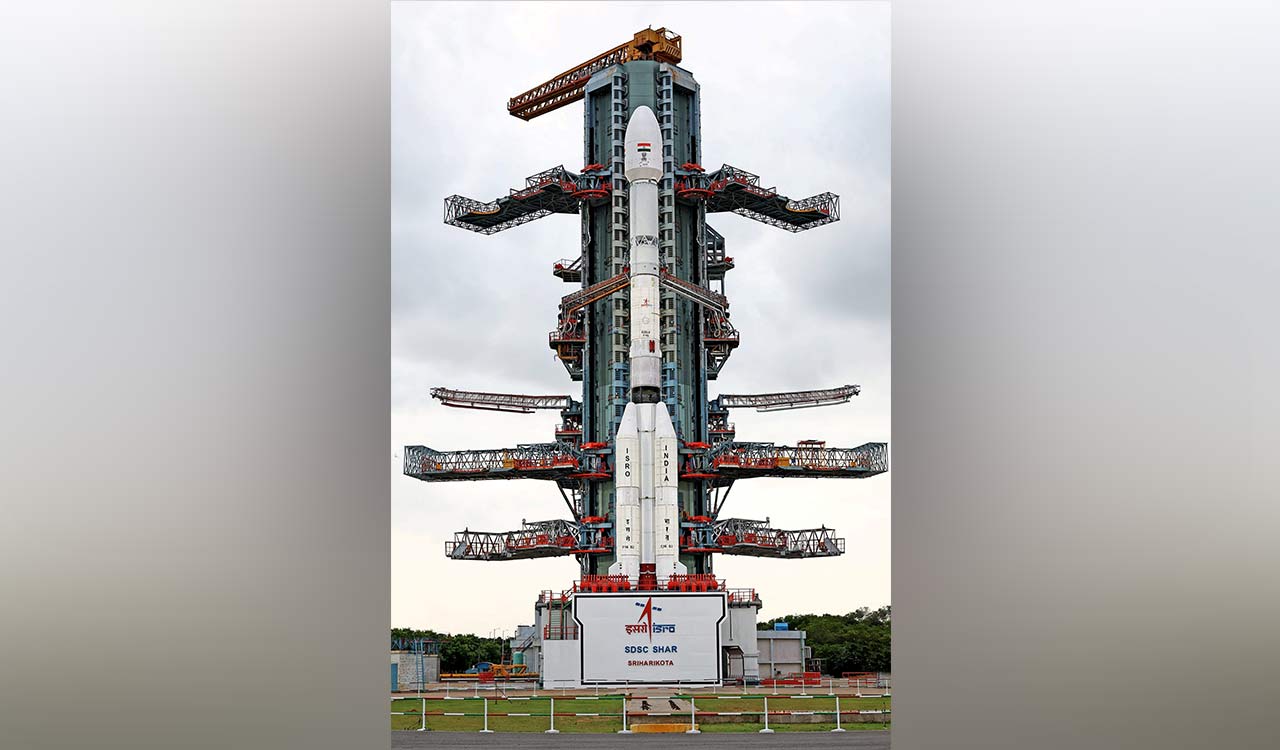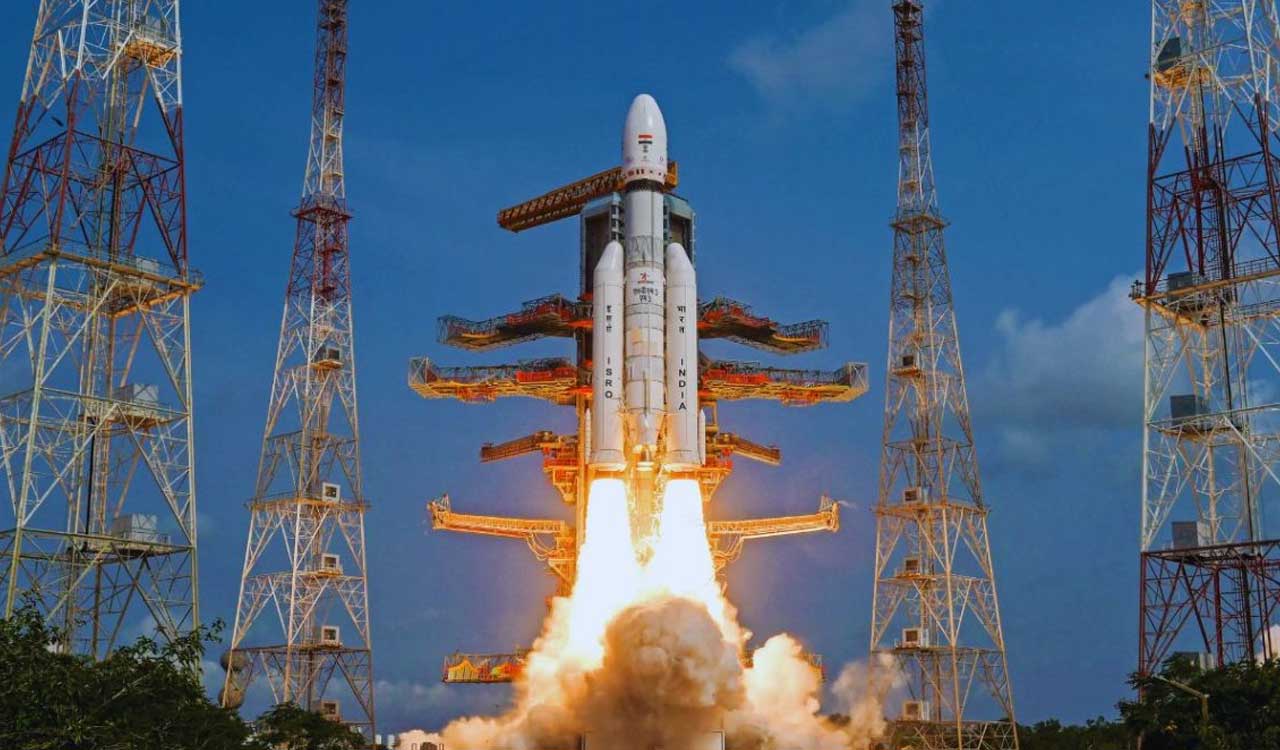Opinion: Space for social well-being
National Space Day serves as a reminder of the importance of unity in achieving greatness

By PK Joshi
India has long been a land of ambition and innovations, with a rich history woven with scientific achievements. August 23 marks a significant milestone in this journey as India celebrates its first National Space Day. This day is a testimony to the tireless efforts, ingenuity and vision of those who have worked relentlessly to propel India into the ranks of elite space-faring nations. It highlights the incredible journey of India’s space missions, from the humble beginnings under the guidance of Dr Vikram Sarabhai to the monumental success of Chandrayaan-3. The theme, ‘Touching Lives While Touching the Moon: India’s Space Saga’, encapsulates the dual impact of space exploration — advancing human knowledge while enhancing the quality of life on Earth.
Lunar Exploration
On August 23, 2023, India etched its name in history with the successful landing of Chandrayaan-3 on the Moon’s south pole. This mission opened new frontiers in lunar exploration and has placed India among the few nations that have successfully landed on the Moon.
The success of Chandrayaan-3 demonstrates the robustness of Indian engineering, the ingenuity of its scientists, and the resilience of its missions. The achievement is not just a technical victory; it is a source of immense national pride, inspiring millions of young minds across the country. The decision to declare this day as National Space Day is a fitting tribute to the success of Chandrayaan-3. However, the purpose of this day extends far beyond commemorating a single mission.
Tracing Roots
The roots of India’s space programme can be traced back to February 23, 1962, with the formation of the Indian National Committee for Space Research (INCOSPAR), a body envisioned by Dr Vikram Sarabhai, the father of the Indian space programme. Dr Sarabhai’s vision was clear — harness space technology for the betterment of society. This vision laid the foundation for the creation of the Indian Space Research Organisation (ISRO) on August 15, 1969, which took over from INCOSPAR with an expanded mandate. The foundation was with the ethos of self-reliance and innovation that has driven India’s space missions ever since. The belief that India, despite its developmental challenges, could achieve greatness in space science, has been vindicated time and again by ISRO’s accomplishments.
Space research and exploration is often seen as an endeavour that pushes the boundaries of human knowledge and capability. However, its impact is not confined to the realms of science and technology alone; it has profound implications for society and the economy at large. One of the most significant contributions of space science is in the field of Earth observation, generally referred to as remote sensing. Satellites launched by ISRO have been instrumental in monitoring natural resources, managing agriculture and aiding disaster management. The data collected by these satellites has helped in efficient resource inventory leading to improved agricultural productivity, better planning and management of resources and more effective disaster response strategies.
The second milestone was the launch of communication satellites. ISRO’s satellite communication networks have bridged the gap between urban and rural areas, bringing information, education and entertainment to even the remotest corners of the country. This has ensured that the benefits of modern technology reach every citizen.
The third and well-established service was through satellite positioning systems, such as the Indian Regional Navigation Satellite System (IRNSS), having enhanced navigation and timing services across the country. These systems are vital for various applications, including transportation, defence and telecommunications. The availability of accurate positioning data has also enabled the growth of industries such as logistics and agriculture, further contributing to the economy. The entire range of location-based services around us is the result of precise positioning, timing and navigation.
Unexplored Aspects
There are many unexplored aspects as well. For example, space missions provide a unique environment for conducting experiments in microgravity, leading to discoveries that would be impossible on Earth. Research conducted in space has led to advancements in medicine, material science and biological sciences. These discoveries have the potential to improve healthcare, develop new materials and unlock the secrets of life itself. From advancements in computing and telecommunications to the development of new materials and medical devices, the spin-offs from space technology can permeate every aspect of our lives and many environmental challenges around us, such as waste management, water treatment and recycling, among others. These innovations can improve the quality of life, and create new enterprises supporting economic growth.
One of the most important aspects of Space Science, and which is to be achieved through National Space Day, is its potential to inspire the next generation of scientists, engineers, innovators and thinkers for social well-being. The achievements and success of missions like Chandrayaan-3, Mangalyaan-Mars Orbiter Mission (MOM) or Aditya-L1 mission and the planned missions like Gaganyaan-Human Rated Launch Vehicle, Shukrayaan-Venus Orbiter or the Bharatiya Antariksha Station serve as powerful examples of what can be achieved with dedication and ingenuity. By showcasing these accomplishments, the National Space Day encourages youth to pursue careers in science, technology, engineering, and mathematics (STEM) and multiple dimensions of social sciences, including economics and management.
This space domain though appears exclusive, has a high degree of inclusivity by developing a range of applications for a common cause of humanity. In addition to educating, this ignites curiosity and passion for knowing the unknowns and exploring the remotes. These successes reflect the spirit of self-reliance, innovation and perseverance that define our nation. By celebrating these achievements, the day fosters a sense of unity and national identity. In fact, it serves as a reminder of the importance of unity in achieving greatness as the achievements so far are collective endeavours that required the collaboration of scientists, engineers, decision-makers and policymakers from various fields.
While National Space Day is a celebration of past achievements, it is a call to action. The success of India’s space programme has been made possible by the continuous support of the government, industry, and the public. To maintain and build on this success, this support must continue. Space exploration is a long-term endeavour that requires sustained investment in research and development. It is crucial that the government continues to provide the necessary funding and policy support to ensure the continued progress of our space programme.
The private sector too has a vital role in driving innovation and contributing to the growth of the space industry. Public support is equally important. By engaging the public and educating them about the benefits of space exploration, the National Space Day can build a strong base of support for future missions. By pushing the boundaries of what is possible, India’s space programme will continue to touch lives around the world.

(The author is Professor with School of Environmental Sciences, Jawaharlal Nehru University, New Delhi. Comments are personal opinion)
Related News
-
Anantjeet, Darshna win mixed team gold at National Shooting
8 mins ago -
Atanu, Anandrao win individual titles for men and women in Senior National archery championship
12 mins ago -
Rakesh’s double ton propels St Mark’s to massive win at HCA Inter-schools
21 mins ago -
No electricity dues pending, says GITAM University Hyderabad
21 mins ago -
Sports briefs: Diya, Aabha win girls doubles sub-junior national badminton U-13 final
27 mins ago -
Gram panchayat polls pointer to growing public discontent against Congress, says BRS
31 mins ago -
AITUC alleges political interference in SCCL, warns of mass stir to protect Singareni
40 mins ago -
Former hockey coach Doraiswamy no more
44 mins ago




